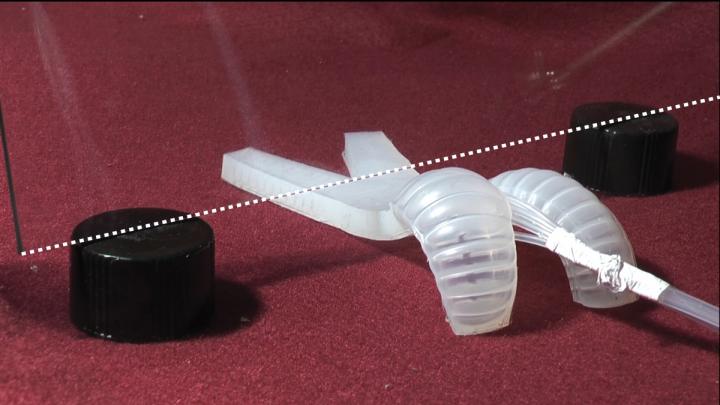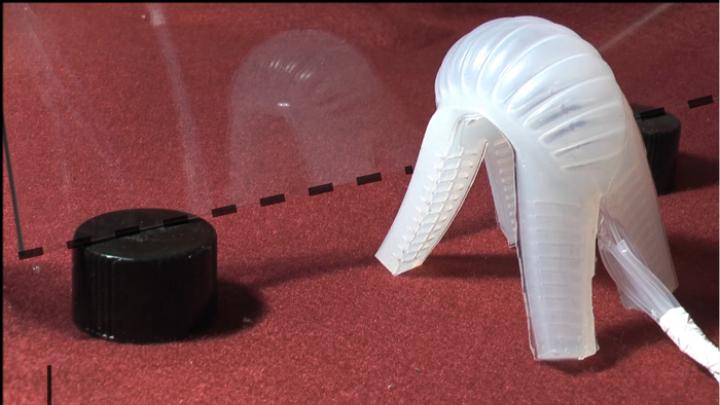Move over, R2D2: a team of Harvard University researchers led by Flowers University Professor George M. Whitesides has designed a robot that can squeeze its way through a mouse hole—a skill that could prove useful one day in earthquake-relief efforts or on the field of battle.
Measuring just five inches long, the soft-bodied robot can inch, crawl, undulate, and squirm its way through spaces as tight as three-quarters of an inch, according to the Whiteside group’s paper, published this week in the journal Proceedings of the National Academy of Sciences (PNAS).
The Harvard project, funded by the Pentagon’s research unit, is part of an ongoing trend: drawing inspiration from nature to create a new class of robots modeled after simpler organisms that lack internal skeletons, such as worms, squids, and starfish. Unlike hard robots that are fabricated from metals and often heavy and expensive to make, flexible robots are relatively cheap and easy to produce, according to the paper. Made predominately from elastomeric polymers, they require simplistic designs and controls to generate mobility and squeeze their way through tricky crevices and terrains. They are also more resistant than their hard-bodied counterparts to damage from common dangers like falling tree limbs or rocks, although their soft elastomer material does make them more vulnerable to punctures from everyday objects like broken glass, according to the article.
The Whitesides team (read more about the team’s research here), which developed the unnamed robot in about two months, fashioned it after a four-legged sea creature. It moves as an operator pumps air, either by hand or via computer, into one or more limbs at a time, allowing the robot to either undulate or crawl.
Below, watch a video of the soft robot wiggling its way underneath a pane of glass just three-quarters of an inch above the surface, as well as a video of how the robots are constructed.









